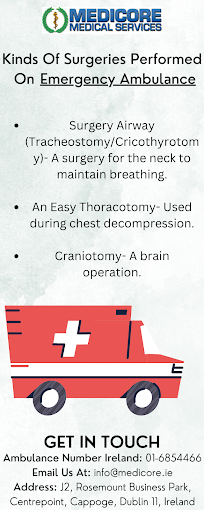The Economic Impact of Emergency Ambulance Services: Saving Lives and Saving Money
Emergency ambulance service play a critical role in providing medical care to individuals in need of urgent attention. Not only do they save lives, but they also have a significant economic impact on society.
In this blog, we'll explore the economic impact of emergency ambulance service, including the cost of providing these services and the cost savings associated with timely medical intervention.
The cost of emergency ambulance service varies depending on a variety of factors, including geographic location, population density, and the level of medical care required. In general, the cost of an ambulance is covered by a combination of public and private funding sources, including insurance payments, government subsidies, and donations.
Emergency ambulance service can also have a significant impact on the local economy. In many cases, ambulances are staffed by highly trained medical professionals who are able to provide a wide range of medical interventions. This can help reduce the burden on local hospitals and medical facilities, allowing them to focus on providing more specialized care to those in need.
Moreover, the emergency ambulance service can also help reduce the economic impact of lost productivity and income resulting from medical emergencies. By providing rapid medical intervention, ambulances can help individuals recover from medical emergencies more quickly, allowing them to return to work and resume their daily lives sooner.
In conclusion, emergency ambulance services have a significant economic impact on society. While the cost of these services can be substantial, the benefits of timely medical intervention provided by ambulance services far outweigh the costs. From reducing the burden on hospitals to promoting faster recovery and reducing healthcare costs, emergency ambulances are a critical component of modern healthcare systems, saving lives and saving money in the process.





Comments
Post a Comment